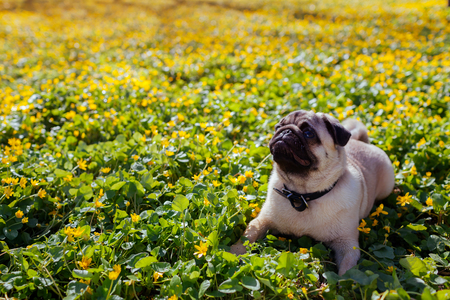1. Why Exercise Matters: The Connection Between Breed and Activity
If you’ve ever spent a lazy afternoon watching your Border Collie herd the chickens, or tried to coax your laid-back Bulldog off the porch for a stroll, you know firsthand that not all dogs are created equal when it comes to energy levels! Understanding why exercise matters for your furry friend—and how their breed plays a starring role—can make all the difference in keeping tails wagging and hearts healthy.
The Importance of Exercise for Dogs
Just like people, dogs need regular movement to stay happy and healthy. But exercise is more than just burning off extra zoomies; it’s crucial for:
- Physical Health: Prevents obesity, strengthens muscles and joints, supports heart health
- Mental Well-being: Reduces boredom, curbs anxiety, and helps prevent unwanted behaviors (like chewing up your favorite slippers!)
- Bonding Time: Whether you’re tossing a ball or exploring trails together, exercise is a wonderful way to connect with your pup
How Breed Influences Exercise Needs
Dog breeds were developed with specific jobs in mind—think herding sheep, retrieving game, or simply lounging by the fire as a lap companion. These original purposes shape everything from a dog’s stamina to their desire for activity. Here’s a look at how breed influences three key factors:
| Breed Type | Typical Energy Level | Temperament Traits | Exercise Needs (per day) |
|---|---|---|---|
| Herding Breeds (e.g., Australian Shepherd, Border Collie) | High | Alert, Intelligent, Driven | 60-90 minutes + mental stimulation |
| Sporting Breeds (e.g., Labrador Retriever, Vizsla) | High | Friendly, Energetic, Eager-to-please | 60+ minutes of vigorous activity |
| Toy Breeds (e.g., Chihuahua, Pomeranian) | Low-Medium | Lively, Affectionate, Playful indoors | 20-30 minutes of light activity |
| Brachycephalic Breeds (e.g., Bulldog, Pug) | Low | Mellow, Loving, Prone to overheating | Short walks & gentle play (avoid heat) |
| Sighthounds (e.g., Greyhound, Whippet) | Burst energy/Low endurance | Calm indoors, Sprinters outdoors | 20-30 minutes of sprint play + casual walks |
| Working Breeds (e.g., Boxer, Rottweiler) | Medium-High | Loyal, Protective, Strong-willed | 45-60 minutes daily with purpose-driven tasks |
A Closer Look: Energy Levels and Temperament Go Paw-in-Paw!
Your dog’s breed doesn’t just affect how much they want to move—it also impacts how they like to move. For example, terriers love digging and chasing small critters; retrievers adore games of fetch; while Mastiffs prefer slow-paced strolls around the yard. Tuning into these natural preferences makes exercise more fun for both pup and pet parent.
The Takeaway on Breed-Specific Activity Needs
No matter if you share your home with a pack of lively Labradors or a snoozy Shih Tzu curled up by the window, matching your exercise routine to your dog’s breed-specific needs is the secret to their happiness. Next time you grab the leash or toss that tennis ball, remember: honoring your pup’s natural instincts keeps them healthier—and makes every day together even sweeter.
2. High-Energy Breeds: Keeping Spirited Pups Busy
If you share your home—and your backyard—with high-energy dogs like Border Collies, Australian Shepherds, or Labrador Retrievers, you know their zest for life is endless. These spirited pups thrive on activity and need both mental and physical stimulation to stay happy and healthy. Let’s dig into what makes these breeds tick and discover some country-inspired ways to keep them busy.
Understanding the Energy Behind the Breeds
High-energy breeds were originally bred for jobs that require stamina, intelligence, and drive—think herding sheep, retrieving game, or helping out on the farm. Without enough exercise and enrichment, these clever dogs might invent their own “jobs,” which can sometimes mean chewing up your favorite boots or digging holes in your garden!
Typical Daily Exercise Needs
| Breed | Recommended Daily Exercise | Fun Activities to Try |
|---|---|---|
| Border Collie | 1.5–2 hours | Frisbee, agility courses, herding games |
| Australian Shepherd | 1–2 hours | Trail hikes, fetch, advanced obedience tricks |
| Labrador Retriever | 1–1.5 hours | Swimming, dock diving, scent games |
Creative Ways to Burn Off Energy
- Agility Training: Set up a mini obstacle course in your yard using tunnels, cones, or even hay bales for them to leap over.
- Nose Work: Hide treats around the porch or garden for a canine scavenger hunt—it’s amazing how sniffing tires them out!
- Water Play: If you have a pond or safe access to a lake, many Labs (and even some Aussies) adore swimming sessions on warm days.
- Farm Chores: Enlist your pup as a helper with light “chores,” like carrying small baskets or gently herding chickens back to the coop.
- Mental Games: Puzzle toys and treat-dispensing balls keep their minds sharp during rainy afternoons indoors.
A Day in the Life of an Active Dog Family
A typical day might start with a brisk morning walk through the fields while dew still sparkles on the grass, followed by a rousing game of fetch before breakfast. Later, you could try a training session working on new tricks or commands—many high-energy breeds love to learn! In the evening, after chores are done and everyone’s winding down on the porch swing, end with some gentle tug-of-war or cuddles by the fire pit. Keeping things varied helps your energetic dog feel fulfilled and part of the family routine.

3. Moderate-Energy Breeds: Striking the Right Balance
When you share your home and heart with moderate-energy dog breeds like Boxers, Bulldogs, or Standard Poodles, understanding their unique exercise needs is key. These pups aren’t as hyper as high-energy breeds, but they still need regular activity to stay healthy, happy, and well-behaved.
What Makes a Breed “Moderate-Energy”?
Moderate-energy dogs are typically playful and social but also appreciate downtime with their family. They thrive on routines that include both active play and restful moments, making them perfect companions for families who enjoy a balanced lifestyle—think backyard games followed by porch snuggles!
Activity Ideas Tailored for Moderate-Energy Breeds
Not sure what kind of exercise is best? Here’s a handy table of activities that suit the personalities and physical needs of some popular moderate-energy breeds:
| Breed | Ideal Activities | Frequency |
|---|---|---|
| Boxer | Brisk walks, tug-of-war, agility games | 30–45 min twice daily |
| Bulldog | Short walks, gentle fetch, indoor play | 15–20 min twice daily (avoid overexertion in heat) |
| Standard Poodle | Swimming, obedience training, puzzle toys | 30–60 min daily (mix of mental & physical) |
Tips for Building a Routine
- Mix it up: Alternate between walking routes and introduce new toys or games to keep things interesting.
- Mental stimulation matters: Interactive games like hide-and-seek or treat puzzles engage their clever minds.
- Pace yourself: Especially for breeds like Bulldogs, always watch for signs of overheating and adjust activity levels on hot days.
- Include the family: Moderate-energy dogs often love participating in family activities—invite them along for yard work or gentle hikes!
A Day in the Life: Example Routine
If you’re looking for a sample schedule for your moderate-energy pup, here’s an idea:
- Morning: 20-30 minute walk around the neighborhood to greet the day.
- Noon: Quick game of fetch or tug-of-war indoors while you take a lunch break.
- Afternoon: Mental enrichment with a food puzzle or basic trick training session.
- Evening: Gentle stroll around the yard or down the street before settling in for cozy cuddle time.
This balanced approach keeps your furry friend fit without overwhelming them—and gives you plenty of opportunities for those sweet pet-parent bonding moments that make country life so special!
4. Low-Energy Breeds: Gentle Activities for Laid-Back Pals
If your home is graced with the calm presence of a Basset Hound, Shih Tzu, Great Dane, or other easygoing companions, you already know that not all dogs crave long hikes or energetic games of fetch. These low-energy breeds have their own unique charm and exercise needs, which are often overlooked in favor of more active pups. But even the most laid-back pals need regular activities to stay healthy and happy. Let’s explore some gentle ways to keep your mellow buddy engaged—without wearing them out.
Understanding Their Pace
Low-energy breeds often prefer a slower lifestyle. They may enjoy lounging on the porch or taking leisurely strolls around the neighborhood rather than running through open fields. But don’t be fooled by their relaxed demeanor—regular movement helps prevent obesity, keeps joints limber, and supports mental well-being.
Popular Low-Energy Breeds
| Breed | Activity Style | Special Considerations |
|---|---|---|
| Basset Hound | Scent walks, sniffing games | Prone to weight gain; avoid overexertion due to long backs |
| Shih Tzu | Short indoor play sessions, gentle walks | Watch for respiratory issues in hot weather |
| Great Dane | Easy walks, short playtimes in fenced yards | Avoid high-impact activity due to joint health concerns |
Gentle Activities to Try
- Sniffari Walks: Take slow-paced walks where your dog is encouraged to sniff and explore. It’s mentally stimulating without being physically taxing.
- Puzzle Toys: Hide treats in interactive toys to engage their mind while they relax indoors.
- Couch Cuddles & Massage: Set aside quiet time for cuddling or gentle massage. This fosters bonding and can soothe achy muscles.
- Indoor Fetch (on Carpet): For those rainy days, toss a soft toy across a carpeted room for a few rounds of gentle fetch.
- Treat Trails: Place treats around the yard or living room and let your dog follow their nose at their own pace.
Tips for Keeping Your Laid-Back Friend Healthy
- Routine is key: Stick to a consistent schedule for walks and playtime—even short sessions make a difference.
- Watch their waistline: Because these breeds are prone to gaining weight, monitor treats and adjust meal portions as needed.
- Paw protection: Keep an eye on nails and paw pads since low-energy pups might not wear them down naturally.
- Mental enrichment: Rotate toys and try new activities occasionally to keep things interesting.
Your Laid-Back Pal’s Exercise Checklist:
| Activity Type | How Often? | Duration/Notes |
|---|---|---|
| Scent Walks | Daily | 10-20 minutes, let them lead the way! |
| Puzzle Toys/Mental Games | A few times a week | Supervised play, rotate toys for variety |
| Cuddle Sessions/Massage | As often as you like! | No time limit—enjoy the snuggles! |
| Treat Trails/Indoor Play | A couple times weekly or during bad weather | Pace based on your pup’s interest level; stop if tired or uninterested |
Your low-energy dog may not run marathons, but with the right mix of gentle activity and loving attention, they’ll thrive just as much as any high-octane breed!
5. Exercise Tips for Multi-Pet Households
If your home feels like a bustling barnyard, with wagging tails and twitching whiskers everywhere you turn, you know that keeping all your pets active can be a delightful challenge! Every breed has its own unique exercise needs, but with a little creativity and planning, you can make sure everyone—from your laid-back Basset Hound to your energetic Border Collie—gets the activity they need. Here are some practical tips to help all your furry companions thrive together.
Understand Each Pet’s Exercise Needs
The first step is to know what each of your pets requires. Some pups want to run for miles, while others prefer sniffing around the yard. And don’t forget about cats—many love a good feather toy chase or climbing adventure!
| Pet Type/Breed | Ideal Daily Activity | Exercise Ideas |
|---|---|---|
| High-Energy Dogs (e.g., Border Collie, Aussie) | 60-90 minutes vigorous play | Fetch, agility courses, hiking |
| Low-Energy Dogs (e.g., Bulldog, Basset Hound) | 20-30 minutes gentle activity | Leisurely walks, scent games |
| Cats | 15-30 minutes interactive play | Laser pointer, cat trees, wand toys |
| Seniors/Small Breeds | Short sessions multiple times a day | Indoor fetch, gentle strolls, puzzle toys |
Create Group and Solo Activities
It’s tempting to try and exercise all your pets together—but sometimes their personalities or physical abilities don’t match up. Try combining group activities with solo time:
- Group Walks: If everyone enjoys walks, go as a family! If not, split the walk into two shorter trips tailored to different energy levels.
- Play Zones: Set up separate spaces in your yard or living room—a quiet corner for older pets and an obstacle course for the younger ones.
- Toy Rotation: Keep things fresh by rotating toys so nobody gets bored. Puzzle feeders can keep brains busy when bodies need a rest!
Stagger Play Times When Needed
If one pet tires out sooner than the other, don’t force them to keep up. Give them a comfy spot to relax while you finish playing with the more energetic one. This way, everyone gets the right amount of exercise without feeling left out or overwhelmed.
Tip: Use Treats and Praise Wisely
Reward good behavior during playtime! For example, if your puppy waits patiently while you toss a ball for your senior dog, offer a treat or some extra cuddles.
Keep an Eye on Everyone’s Health
A multi-pet household means lots of personalities and needs under one roof. Watch for signs of fatigue or overexertion—like heavy panting or reluctance to move—and adjust activities as needed. When in doubt, consult your vet about what’s best for each furry friend.
The Joy of Variety!
The best part about having a house full of pets? There’s never a dull moment! Mixing up activities keeps everyone happy and healthy—and gives you plenty of stories to share over morning coffee on the porch. With just a bit of planning and patience, you’ll have the happiest herd on the block!
6. Seasonal and Rural Considerations: Making the Most of Your Backyard
If you’re lucky enough to call the countryside home or have a spacious backyard, you know what a blessing it is for your pets! But as the seasons change, so do your pup’s exercise needs and safety concerns. Let’s explore how to keep your dog active and happy all year long—no matter the weather—while making full use of rural or outdoor spaces.
Adapting Exercise Routines by Season
| Season | Exercise Ideas | Safety Tips |
|---|---|---|
| Spring | Nature hikes, fetch on soft grass, sniffing games with hidden treats | Watch for muddy patches, ticks, and new plant growth that might be toxic |
| Summer | Early morning/evening walks, water play (sprinklers or kiddie pools), shaded obstacle courses | Avoid midday heat, provide fresh water, check paws for hot surfaces |
| Fall | Leaf pile romps, scent trails with favorite toys, longer explorations in cool weather | Monitor for mushrooms and acorns, keep an eye out for hunting season hazards |
| Winter | Shorter but more frequent runs, snow maze games, indoor fetch if it’s icy outside | Dress short-haired breeds warmly, clear ice from paths, wipe paws after walks |
Maximizing Rural and Outdoor Spaces
- Create a Safe Play Zone: Use natural barriers like hedges or install fencing to keep curious pups secure while they roam.
- Diverse Terrain: Let dogs explore fields, woods, and streams—but always supervise to prevent wildlife encounters or injuries.
- Enrichment Features: Set up logs for climbing, digging zones in sandy corners, or scatter scent trails using kibble or safe herbs.
Fun DIY Backyard Games for Every Breed
- Treat Treasure Hunt: Hide treats under overturned flower pots or in snuffle mats scattered around the yard.
- Tug-of-War Posts: Secure sturdy ropes to fence posts for supervised tug sessions.
- Nose Work Trails: Lay a trail of treats through tall grass or under fallen branches to encourage sniffing and problem-solving.
- Puppy Agility Course: Use hay bales, tunnels made from cardboard boxes, and weave poles crafted from old broom handles.
- Splash & Dash: Fill up a kiddie pool for water-loving breeds—perfect for cooling off after a game of chase!
Backyard Safety Reminders
- Chemicals: Avoid using pesticides or fertilizers where your dog plays.
- Toxic Plants: Double-check that landscaping is pet-safe; common culprits include lilies and azaleas.
- Pest Prevention: Regularly check for ticks and fleas after outdoor adventures.
- ID Tags: Always ensure your dog’s collar has updated contact info—even in fenced yards!
- Puppy Proofing: Secure gates and watch for escape routes under fences.
No matter the season or your breed’s quirks—from herding collies who love wide-open fields to playful pugs who prefer shady nooks—your backyard can become their own personal paradise. With a little creativity and attention to safety, every day outdoors can be an adventure!
7. When to Consult a Pro: Professional Guidance for Unique Needs
Every pup is unique, and sometimes their exercise needs go beyond what we can handle at home. Whether you’re wrangling a lively Border Collie or caring for a senior Dachshund with creaky joints, knowing when to call in the pros can make all the difference. Here’s how to tell if it’s time to seek advice from a veterinarian or certified dog trainer, especially when your furry friend has health concerns or special requirements.
Signs Your Dog Might Need Expert Help
If you notice any of these signs during walks or playtime, it could be time to reach out for professional guidance:
| Sign | What It Could Mean | Who to Call |
|---|---|---|
| Limping or Lameness | Possible injury or joint issues | Veterinarian |
| Panting Excessively | Overexertion or underlying health issue | Veterinarian |
| Lack of Interest in Exercise | Pain, fatigue, or emotional stress | Veterinarian/Trainer |
| Sudden Aggression or Anxiety During Activity | Behavioral concern, pain, or fear | Certified Dog Trainer/Veterinarian |
| Unusual Stiffness After Activity | Muscle strain or arthritis flare-up | Veterinarian |
| Puppies with Very High Energy or Focus Issues | Boredom, lack of stimulation, breed-specific needs not met | Certified Dog Trainer |
| Seniors Slowing Down Dramatically | Aging joints, heart concerns, other age-related issues | Veterinarian |
| Brachycephalic Breeds (like Bulldogs) Struggling to Breathe During Playtime | Anatomical challenges specific to breed; risk of overheating | Veterinarian/Trainer familiar with the breed |
| Weight Concerns (Too Thin/Overweight) | Nutritional imbalance, lack of proper exercise plan for breed and age | Veterinarian/Nutritionist/Trainer for exercise adjustment tips |
How Pros Can Help Your Pet Thrive
Your Veterinarian:
- Create a safe exercise plan: Especially important for dogs with medical conditions like heart disease, hip dysplasia, or arthritis.
- Recommend diagnostics: To rule out hidden health problems affecting mobility or energy.
- Guide on weight management: Because exercise and diet go paw-in-paw!
Your Certified Dog Trainer:
- Bespoke activity ideas: Trainers can tailor games and routines that fit your dog’s breed and personality—think scent work for Beagles or agility courses for Aussies.
- Troubleshoot behavior: If your pup gets too excited or fearful during outings, a pro can teach calming cues and focus exercises.
Special Cases: When Expertise Matters Most
| Situation | Why Pro Advice Is Key |
|---|---|
| Brachi breeds (Pugs, French Bulldogs) | Their short noses mean they overheat easily; vets/trainers know safe limits. |
| Sighthounds (Greyhounds, Whippets) | Their lean frames need gentle ramp-up to avoid muscle strains. |
| Puppies & Seniors | Bones and joints are more sensitive—pros help balance fun and safety. |
A Little Extra Love Goes a Long Way!
No matter if you’re on a farm with a pack of active herders or in an apartment with a couch-loving Pug, don’t hesitate to ask questions. Vet visits and training sessions are investments in your pet’s happiness—and yours too. After all, a healthy dog means more tail wags on those country walks and cozy evenings together by the fire.


